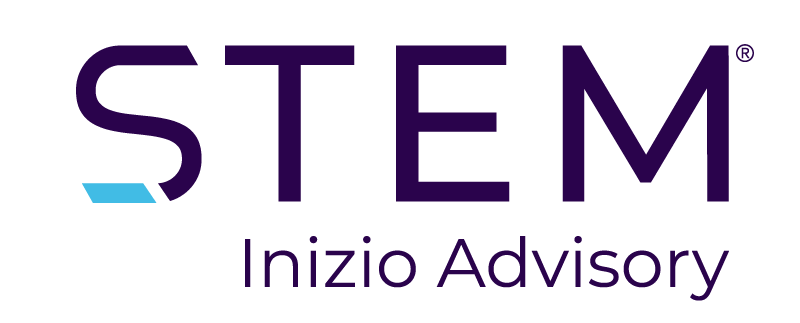How is customer engagement evolving?
Authored by: Nick Syndercombe, Country Lead UK & Ireland
Customer engagement is instrumental in providing insights on products or services to pharmaceutical decision-makers so they can cater to diverse patient needs. It can also help raise and address current challenges, aiding the move towards patient-centric approaches and improving customer satisfaction.
COVID-19 has shaped the engagement models used by pharmaceutical commercial leadership teams to interact with customers, with a move towards virtual platforms. Even though it increases access for a wide range of individuals, screen-to-screen (S2S) interaction has its own challenges, including making it harder to form connections. Therefore, customer engagement is continuing to evolve and current trends are shaping how the industry interacts with customers to achieve the desired outcome.
In this article, Nick Syndercombe, Country Lead UK & Ireland at STEM Healthcare, Inizio Advisory, explores four trends currently shaping how the pharmaceutical industry approaches customer engagement.
Four trends shaping customer engagement
Comparative analysis of UK customer engagement projects over the last three years has highlighted the top trends shaping the field, including:
1. A blended engagement model
Pharmaceutical companies currently implement hybrid approaches to customer engagement. However, senior leadership is proposing a return to using predominantly face-to-face (F2F) interactions. This could help overcome communication limitations when using the S2S system, helping to build connections and better provide for patients.
Despite the previous success of F2F-based models, the training, coaching and materials invested in S2S services have seen a significant improvement in the outcomes of S2S customer engagement. As a result, F2F and S2S have proven comparability in creating good selling outcomes, with S2S offering additional benefits such as greater flexibility and wider coverage.
Irrespective of the engagement platform, a positive mindset has been proven to significantly increase customer engagement outcomes, with the highest-performing sales teams being those with a positive mindset during S2S engagement. By leveraging this insight, a competitive advantage can be gained, finding the best balance for the hybrid (F2F + S2S) blended model to suit customer preferences and enhance the move towards a customer-centric approach.
2. Emotive, patient-centric selling
Regardless of the channel used to engage with customers, it is important to understand the skills required to better connect with patients and elicit a behavioral change to obtain the desired outcome. The approach adopted can differ depending on the platform used, with alternate strategies adopted for S2S and F2F leading to the best results.
For example, in S2S calls, emotive, patient-centric conversations have proven key to driving success, with a discussion focused on patient needs being twice as likely to result in a good selling outcome.
In contrast, F2F discussions that focused on challenging healthcare professionals (HCPs) on their beliefs about competitor products were three times more likely to lead to a good selling outcome.
Moving forward, implementing a strategy that uses an integrated F2F and S2S approach will lead to the best customer engagement outcomes.
3. Referencing previous HCP interactions
The move to hybrid working and omnichannel engagement has shifted the role of commercial field teams, calling into question whether they should be orchestrating customer journeys instead of just implementing them.
Adopting an orchestrated approach can aid in incorporating a seamless customer continuum, working to build on previous interactions with a customer in a logical, sequential manner. This can help to identify a clear progression and opportunities for growth that can help to achieve a good selling outcome.
Analysis of UK clients’ S2S interactions showed that only 30% of commercial field team representatives mentioned a previous interaction, limiting how often the customer continuum approach can be harnessed. Devising strategies to include commercial field teams in customer journey orchestration could help to increase this figure, improving interactions with customers and bettering results.
In addition, leveraging omnichannel engagement, such as emails, webinars and website imprints, can further reinforce messaging, promoting seamless interactions that build better customer engagement and generate long-term results.
4. Cross-functional account management
Pharmaceutical companies operating with cross-functional account management leverage expertise and resources from across the business, mitigating company silos and bringing together diverse expertise and perspectives to solve problems. This enables strategic collaboration with a clear and structured framework to better the customer experience.
Enforcing cross-functional teams starts with the most senior leaders and runs throughout the organization. As a result of fewer in-person interactions, communication challenges have arisen, making it harder to establish relationships and build collaboration. With less exposure to diverse expertise and opportunities through in-person team collaboration, skills development has also stagnated.
Moving forward, pharmaceutical companies should identify best practices in cross-functional alignment, outlining specific roles or responsibilities where cross-functional management works and where it doesn’t. Based on this, a clear understanding of required improvements can be gained and support needs can be addressed.
The future of customer engagement
Customer engagement in the pharmaceutical sector is changing, shaped by these four distinct trends. With the intent of better addressing customer needs, after comparison with projects across the UK, a positive mindset with a nuanced hybrid approach is statistically more likely to result in a good selling outcome. Blending in seamless interactions and cross-functional collaboration mitigates silos and better positions pharmaceutical commercial teams for success.
Although these are the current trends, customer engagement will continue to evolve, with new trends expected to emerge to reflect changes in the pharmaceutical industry as patient-centricity remains a priority. Companies must remain vigilant to adapt their current operations to provide patients with the best solutions. Forming a collaboration with an experienced, multi-specialized partner can help pharmaceutical companies continuously innovate to strengthen their customer engagement strategies, meet patient needs and achieve better results.
Contact us to learn more and explore how your brand is performing vs. these trends.

Related reading.
Jump to a slide with the slide dots.
Will 2025 be a tipping point to unlock innovation in pharma commercialization?
Explore how AI is revolutionizing pharma, driving efficiency & impact. Get expert insights & trends for 2025. Download the report now!
Read moreFrom metrics to impact: Selecting the right measures to determine MSL value
From metrics to impact selecting right measures to determine msl value.
Read moreEnhancing pharma brand performance through in-depth customer engagement insights
In today’s dynamic pharmaceutical landscape, having a high level of strategic alignment and the flawless execution of this strategy is crucial.
Read more